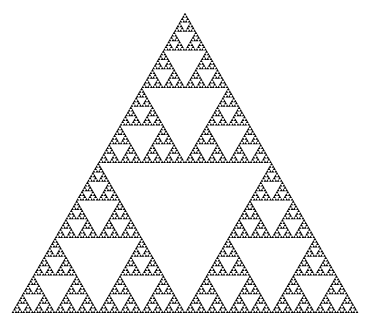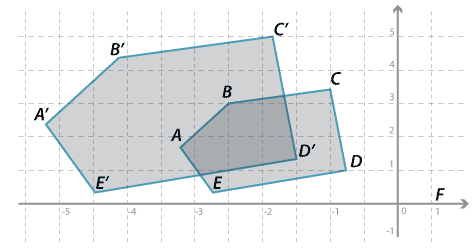![]()
Similar figures
Two plane figures are called similar if an enlargement of one figure is congruent to the other, that is, if one can be mapped to the other by a sequence of translations, rotations, reflections and enlargements. Similar figures thus have the same shape, but not necessarily the same size.
Thus a scale drawing of a two-dimensional object, and an enlargement of a plane figure, both produce figures similar to the original.
It follows from the properties of enlargements discussed in the previous page that when two figures are similar:
- matching angles are equal
- matching distances are in a constant ratio.
Conversely, if two figures can be matched up so that these two conditions apply, we can enlarge the first figure by the constant ratio. The enlarged figure is thus congruent to the second figure, so the first and second figures are similar.
The constant ratio is called the similarity ratio or similarity factor. If two figures are similar with similarity ratio 1 : 1, then the two figures are congruent; otherwise they have different sizes.
Two figures are similar if there is an enlargement of one figure that is congruent with the other.
Matching lengths in similar figures are in the same ratio and matching angles in similar figures are equal. In the diagram below pentagon \(A^\prime B^\prime C^\prime D^\prime E^\prime\) is similar to pentagon \(ABCDE\). The point \(F\) is the centre of enlargement for the enlargement transformation that maps pentagon \(A^\prime B^\prime C^\prime D^\prime E^\prime\) to pentagon \(ABCDE\). The enlargement factor is \(\dfrac{3}{2}\).
Some of the matchings of points with points, intervals with intervals, and angles with angles are:
\begin{align}A\leftrightarrow A^\prime AB\leftrightarrow A^\prime B^\prime \angle BAE\leftrightarrow \angle B^\prime A^\prime E^\prime\end{align}In the famous Sierpinski's Triangle, every triangle visible is similar to every other triangle.





